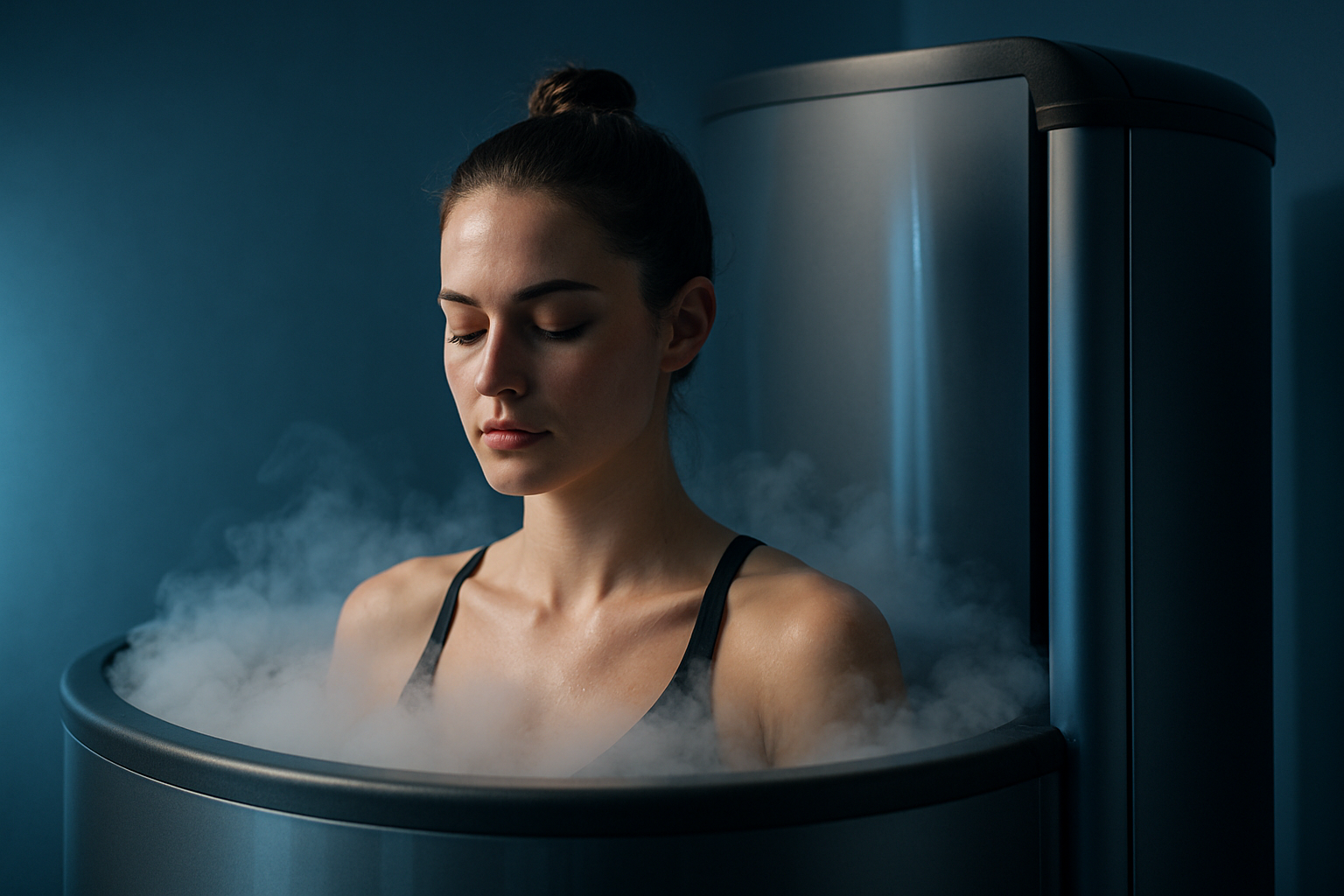Cryotherapy: The Cold Revolution in Wellness
In a world constantly seeking innovative approaches to health and beauty, cryotherapy has emerged as a cutting-edge treatment that's capturing the attention of wellness enthusiasts and athletes alike. This ice-cold therapy, which involves exposing the body to extremely low temperatures for short periods, promises a myriad of benefits ranging from pain relief to enhanced athletic performance. As more people turn to alternative therapies for holistic well-being, cryotherapy stands out as a unique and intriguing option that challenges our preconceptions about the healing power of cold. But what exactly is cryotherapy, and how has it evolved from a niche medical treatment to a mainstream wellness trend?

The treatment gained popularity in Europe in the 1980s, particularly in sports medicine, before making its way to the United States in the early 2000s. Initially used primarily for athletic recovery and pain management, cryotherapy has since expanded its reach into the realms of beauty, wellness, and even mental health.
The Science Behind the Freeze
At its core, cryotherapy works by exposing the body to extremely cold temperatures, typically ranging from -100°C to -140°C (-148°F to -220°F), for a short duration of two to four minutes. This exposure triggers a physiological response in the body, which proponents claim can lead to numerous health benefits.
When subjected to such extreme cold, the body’s blood vessels constrict, redirecting blood flow from the extremities to vital organs. This process, known as vasoconstriction, is believed to reduce inflammation and flush out toxins. As the body warms up post-treatment, blood rushes back to the extremities, potentially bringing with it increased oxygen, nutrients, and enzymes that may accelerate healing and recovery.
Research on cryotherapy’s effects is ongoing, but early studies have shown promising results in areas such as pain reduction, muscle recovery, and even mood enhancement. A 2018 study published in the Journal of Clinical Medicine found that WBC could significantly reduce muscle pain and inflammation in athletes, while a 2016 study in the International Journal of Sports Medicine suggested potential benefits for treating anxiety and depression.
From Niche Treatment to Wellness Phenomenon
What was once a treatment reserved for elite athletes and medical patients has now become increasingly accessible to the general public. Cryotherapy centers have sprung up in major cities worldwide, offering services that range from localized treatments to full-body cryotherapy chambers.
The wellness industry has been quick to embrace cryotherapy, with spas and health clubs incorporating it into their service offerings. This integration has helped to position cryotherapy not just as a medical treatment, but as a lifestyle choice for those seeking to optimize their health and well-being.
Celebrity endorsements have played a significant role in cryotherapy’s rise to prominence. High-profile figures from the worlds of sports, entertainment, and fashion have publicly touted the benefits of the treatment, further fueling public interest and curiosity.
Beyond the Full-Body Freeze: Diverse Applications
While whole-body cryotherapy remains the most well-known form of the treatment, the concept has expanded to include a variety of specialized applications:
-
Cryofacials: These treatments focus on applying cold therapy to the face, purportedly reducing inflammation, tightening pores, and promoting a youthful appearance.
-
Localized cryotherapy: This targeted approach uses handheld devices to apply cold therapy to specific areas of the body, often used for pain management and injury recovery.
-
Cryosurgery: A medical application where extreme cold is used to destroy abnormal tissue, such as in the treatment of certain skin conditions or early-stage cancers.
-
Cryolipolysis: A non-invasive fat reduction technique that uses controlled cooling to eliminate fat cells in targeted areas of the body.
These diverse applications have broadened cryotherapy’s appeal, making it relevant to a wide range of industries from medical and sports to beauty and wellness.
The Cryotherapy Experience: What to Expect
For those considering trying cryotherapy, the experience can be both exhilarating and intimidating. A typical whole-body cryotherapy session involves stepping into a cryochamber or cryosauna wearing minimal clothing, often just underwear, gloves, and socks to protect extremities.
The chamber is then filled with nitrogen gas, dropping the temperature to sub-zero levels. During the two to four-minute session, participants are encouraged to move around to keep their blood flowing. Many describe the sensation as intense but invigorating, often comparing it to the rush of jumping into a cold pool.
After the session, the body begins to warm up rapidly, leading to a surge of endorphins that many users report as energizing and mood-boosting. While individual experiences vary, proponents often describe feeling rejuvenated, with reduced muscle soreness and increased mental clarity.
Navigating the Risks and Controversies
As with any emerging wellness trend, cryotherapy has not been without its controversies and concerns. Critics argue that the long-term effects of repeated exposure to extreme cold are not yet fully understood, and some medical professionals caution against overstating the treatment’s benefits.
Safety concerns have also been raised, particularly following a 2015 incident in which a spa worker in Nevada died after being trapped in a cryotherapy chamber. This tragedy led to increased scrutiny of cryotherapy facilities and calls for stricter regulation of the industry.
Moreover, the FDA has not cleared or approved whole-body cryotherapy devices for medical treatment of any specific condition, stating that there is a lack of evidence about its safety or effectiveness in treating diseases or conditions.
Despite these concerns, proponents of cryotherapy maintain that when practiced responsibly and under proper supervision, the treatment can be a safe and effective addition to one’s wellness routine.
The Future of Cryotherapy: Cooling Down or Heating Up?
As research into cryotherapy continues, its role in the wellness landscape is likely to evolve. Current trends suggest a move towards more personalized and targeted cryotherapy treatments, with advances in technology allowing for greater precision and control.
The integration of cryotherapy with other wellness practices, such as meditation or breathwork, is also on the rise, reflecting a growing interest in holistic approaches to health and well-being.
As the wellness industry continues to expand and innovate, cryotherapy stands as a testament to our ongoing fascination with pushing the boundaries of what’s possible in the pursuit of optimal health. Whether it will solidify its place as a staple of modern wellness or fade as a passing trend remains to be seen, but for now, the big chill of cryotherapy continues to captivate those seeking new frontiers in health and beauty.





